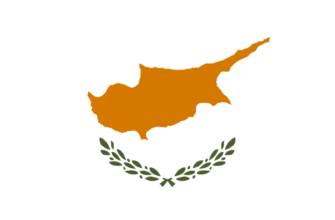The Republic of Yemen is located in the southwestern part of the Arabian Peninsula. In addition to the mainland it belongs to the islands of Socotra, Kamaran, Perim, Sukar and others. The modern state emerged in 1990 from the unification of North and South Yemen after years of struggle. The northern part was called the Yemen Arab Republic, the southern part — the People’s Democratic Republic of Yemen.
This is what the modern flag of Yemen looks like:

History of the flag
The modern national flag was approved on May 22, 1990.
From 1927 to 1965, the Republic of Yemen had its own flag. Yemen inherited it from the Kingdom of Yemen, which existed from 1927 to 1962. It was formed after the end of World War I and the liberation of the country from centuries of Ottoman rule. The red flag featured a curved saber and five stars: four at the corners of the flag and a fifth above the weapon.

After the unification of the Kingdom of Yemen in 1958 with Egypt and Syria, a different flag was adopted. The flag of red, white and black stripes had a green five-pointed star in the center.
From the founding until April 4, 1962, the flag belonging to the Federation of South Arabia was considered the national symbol of Yemen. It consisted of three horizontal stripes of black, green and blue, separated by thin yellow ones. It also bore the Muslim star and the crescent moon.

The former flag of the Republic of Yemen was replaced in 1962 by a dense set of three traditional Arab stripes — red, white and black with two small green stars.

In 1967 it was replaced by a flag of the same colors. At the base of the cloth was a blue triangle with a red five-pointed star.

Description
The modern flag of Yemen consists of stripes of different colors. The width and length of the cloth was approved by the Constitution of Yemen in 1991 and is in the proportion 2:3.
Flag colors
The flag is divided into three bands of red, white and black. These are the traditional colors of Arab countries.
Meaning of colors and flag symbol
The meaning of the colors of the Yemeni flag is closely related to the Islamic religion. According to tradition, the prophet Muhammad fought under a white flag. He also entered Mecca with it. White is considered to be the color of the Umayyads, who are direct descendants of the prophet. They ruled Muslim countries from 661 to 750, and from 756 to 1031 in Spain.
Black was also present on the flags of Muhammad’s troops. In addition, it belonged to the Abbasid dynasty, who ruled the caliphate from 750-1258.
Red was considered the color of the Hashemites, who led their dynasty from the grandfather of the Prophet Muhammad. It was they who for centuries were the emirs of Mecca, a right they passed on from father to son.
Interesting facts about the flag
Modern history treats the colors on Arab flags differently. After the overthrow of the monarchy in Egypt in 1952, the Arab colors came to symbolize the tragic history of the oppressed people. Black — trials and hardships on the road to freedom, red — popular losses during the class struggle, white — the bright future of the free people.
The constitution of Yemen approved the presence of the state symbol on the coat of arms of the country. On either side of the eagle are flags. And on the chest is a shield with a branch of a coffee tree. Exactly Yemen is the motherland of the favorite drink on all continents of the globe. On the territory of the state in ancient times was the country of Saba, which built the dam Marib. It is symbolically represented below the image of coffee.
The modern Arab symbol was approved in the early twentieth century in Istanbul, where the young leaders of these countries gathered. In the process of discussions, they decided that the symbolic independent banner of the Arabs should contain three colors. White for the Umayyads, black for the Abbasids, and green for the Fatimids. Sharif Hussein, leader of the uprising in the Hijaz on June 10, 1916, belonged to a family where red was the dynastic color. He added it to the banner during the meetings. May 30, 1917 can be considered the birthday of the independent Arab flag.
Every state has not only changed rulers over the course of its development, but also state symbols. The flag of Yemen managed to change, but left unity with other Arab flags.
General information about Yemen
| Official language | Arabic |
| Capital | Sanaa, Aden, Sayoun |
| Territory | 527,970 km2 |
| Population | 25,408,288 people |
| Currency | Yemeni riyal (YER) |
| Phone Code | +967 |










I remember visiting a Yemeni restaurant, and they had the flag displayed proudly. It sparked a conversation about Yemen’s rich culture and history. I learned how the red, white, and black colors represent unity, freedom, and hope. It’s amazing how flags can tell such deep stories!
I just love the vibrant colors of the Yemeni flag! It reminds me of my trip to Yemen where I got to try local foods and meet amazing people. The flag truly represents the rich culture and history. Can’t wait to learn more about its significance!
As a guy who loves history, I remember spotting the Yemen flag on a trip. The colors—red, white, and black—reminded me of unity and struggle. It’s cool how flags tell stories. Learning about Yemen’s flag made me appreciate their resilience even more.